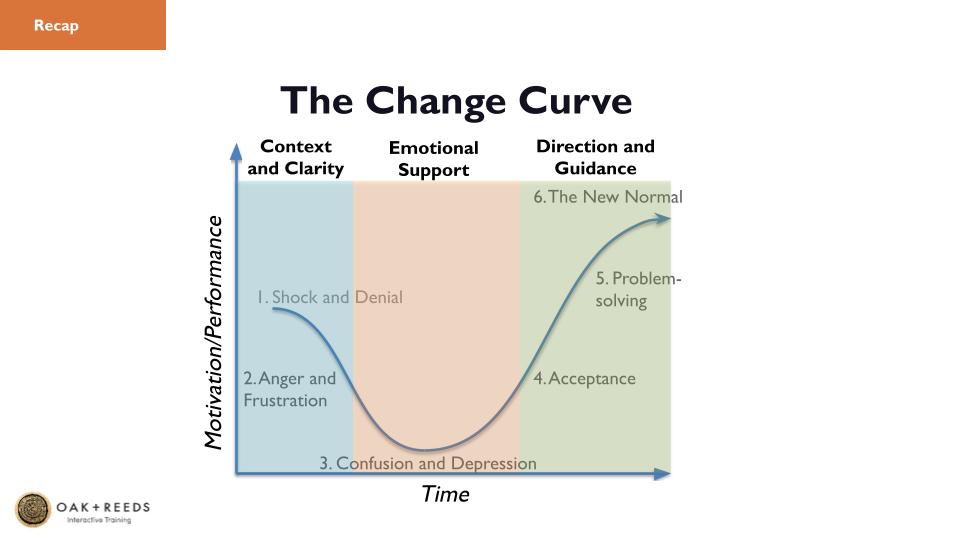What leaders need to know about change management

Change is rarely met with enthusiasm. Usually, the first response is lackluster; it takes effort to unlearn what is comfortable. However, using a change management framework encourages the people impacted to adapt to a new process and increases the success of implementation.
For example, switching expense reporting platforms may seem like a simple change. But think back to the last time you traded in one process for another.
There are likely to be a few frustrating moments while learning where functions exist in a new dashboard. It takes time to rewire the brain. And if the new process is not intuitive, there is a greater chance that employees may not like the change.
When you use a change management model, it helps you anticipate resistance and establish a plan for guiding your organization to successful implementation.
What is Change Management?
Change management is a framework to execute a significant internal or external shift in its processes, culture, technologies or other critical operational aspects.
“It is staying ahead of change so that your entire team can deal with change effectively rather than just leading from the top,” says André van Hall, speaker and author of “The Curiosity of Change.” “It takes initiative and challenges the status quo before you are the victim of it.”
More specifically, change management focuses on the people side of change, says Dave Collins, founder and CEO of Oak and Reeds. He divides change management into two categories:
- The leadership competencies it takes to lead individuals through change.
- The leadership skills needed to lead teams or organizations through a transformation.
“Leading people requires emotional intelligence and understanding how change disrupts people’s patterns differently,” Collins says. “At the organizational level, it is about understanding how to be strategic and come up with an execution and communication plan.”
Types of Change Management
Many theories and methodologies exist for approaching organizational change. Collins relies on two to help leaders with change management — The Kübler-Ross Change Curve and the Beckhard-Harris Change Equation.

The Kübler-Ross Change Curve is based on the six stages of grief and acknowledges that change can trigger emotional reactions.
- Shock and denial
- Anger and frustration
- Confusion and depression
- Acceptance
- Problem-solving
- The new normal
“People must do two things, whether it’s a personal or work change; they have to let go of the old way before they can embrace and learn the new way,” Collins says. “If you short circuit the ‘letting-go’ process, you get a lot of frustrated people maybe secretly hoping they can throw enough sand in the gears that change doesn’t work and they can go back to the old way, the way they are comfortable with.”
Leaders can get frustrated because they are usually further along the curve than the rest of the team. So, while leaders may already be at stages 4-6, their teams may only be in stages 1-3.
“That disconnect can cause a lot of anxiety and hurt feelings. Be patient and allow people the processing time and trust that they’ll get through it,” Collins says. “Most people will, but some folks never get through it.”
Then you need to have hard conversations about individuals who are unable to change and operate in the new environment. It’s important to ask, “Are we okay with a lower level of performance or that they never really got excited about it?”
Why is Change Management Important?
Change is unavoidable. The world is continually changing, and businesses must evolve for sustainability and growth. By managing change, you can stay on top of internal or external shifts rather than being surprised by them.
While change can be painful, the results can improve workflows to enhance employee experiences, lower project expenses, improve company culture, mitigate risk and increase the organization’s ability to overcome obstacles.
How to Deal with Resistance to Change in an Organization
Collins uses the Beckhard-Harris Change Equation to help leaders overcome resistance to change. In the 1970s, researchers Richard Beckhard and Reuben T. Harris found that large, complex organizations aren’t good at changing, and perhaps more importantly, they are not good at predicting the likelihood that a change will be successful.
“Very often, leaders think, ‘Oh, this is going to be easy. We’ll get through this in three months,’” Collins says. “Their predictive power was almost worse than their ability to change.”
The Beckhard-Harris Change equation emerged from the researchers and Collins encourages leaders to use this to overcome resistance to change.
Dissatisfaction x Vision x First Steps > Resistance
Dissatisfaction starts by pointing out the things that are broken, annoying or not operating well. This boils down to clearly identifying the why behind a change. When this goes unsaid, people can get frustrated that it is simply changing for the sake of change.
Vision highlights how things will be better or more efficient if the change is implemented correctly. Explain what is getting better and how the company is going to be more profitable.
“It’s not just talking about the bottom line, like how will this affect our numbers, but how will people feel better,” Collins says. “How will they be less stressed? How will they be more engaged? I teach the Change Curve first, so people understand much of change is emotional processing. If you can speak in that language well, you’re going to help people through those emotions and get to acceptance.”
The last variable is First Steps. The more difficult you make the first thing people have to do, the harder it is for them to execute.
“Change is not a ‘rip the band-aid off.’ You need to get people going little by little,” Collins says.
For example, if you’re implanting a significant IT change, the first step should be to log in and upload a profile picture rather than re-uploading all the data into a new platform.
“When the variables on the left (dissatisfaction, vision and first steps) are greater than the power of your resistance, your change will probably work,” Collins says. “The idea is to increase the power of these three variables working in your favor.”
Communication plays a critical role when executing any type of change management, especially when facing resistance.
“Share information and expect your team (everybody) to take initiative so you can push decision-making as far down the organization chart as possible,” van Hall says. “The benefit is that when ten members accept the responsibility of ensuring their area is not only operating at peak efficiency, but also staying ahead of changes.”
3 Steps in the Change Management Process
A robust communication plan is central to implementing change. Three steps guide the details contained within that plan.
1. Make a list of all stakeholders.
“Very often leaders leave out a good chunk of stakeholders that aren’t immediately obvious,” Collins says. “Remote work, hybrid work, bringing people back into the office, or not, is an example that has come up a lot. There are a lot of stakeholder audiences that need to be involved.”
Using the example of a mid-level manager returning to the office, those stakeholders include direct reports, IT staff, clients, cross-functional partners, vendors, the individual’s family, kids, and friends.
“You don’t have to spend all day thinking about people’s family, but for some of these changes, it’s a huge effect and may be harder to manage that side of things than necessarily your teammates, who you’ll just be talking to slightly differently,” he added.
2. Answer two key stakeholder questions.
- What do they have to do as part of this change?
- What’s in it for them if the change is successful?
“It becomes so much easier to create a coordinated communication campaign when you answer those questions, and the logistics become very clear,” Collins says.
3. Acknowledge change is occurring rather than pretending its business as usual.
“Don’t put your head in the sand and pretend nothing is changing; recognize that these changes are happening,” Collins says.
Change Management Best Practices
Change, even with good management, is hard. But when you use these best practices you can help limit resistance and build momentum to increase the chances of a successful implementation.
1. Create a culture of safe collaboration and free thinking.
“Realize that in most industries, it is our least paid employee, so that is delivering the product or service,” van Hall says. “Train them, coddle them, develop them, and have high expectations in return.”
2. Share information early and often, don’t hoard information as a leader.
“You’re better off treating people like adults, telling them hard news early to give them more time to process,” Collins says. “Share news, share clear information early and often. Be patient with yourself and with your people.
3. Stop taking yourself so seriously!
van Hall encourages leaders to accept failure as teachable, rather than punishable moments.
4. Step back and let creativity kick in.
“Once people accept the change, step back and let their creative brains run. Allowing people to implement and personalize the change can happen in ways you didn’t expect,” Collins says. “That’s people taking ownership and that is what those emotions look like when people are engaged and feel bought in.”
Related Resources
Help your team manage change fatigue
5 ways to become an effective change leader
Category : Leadership
Tags: Change Management
